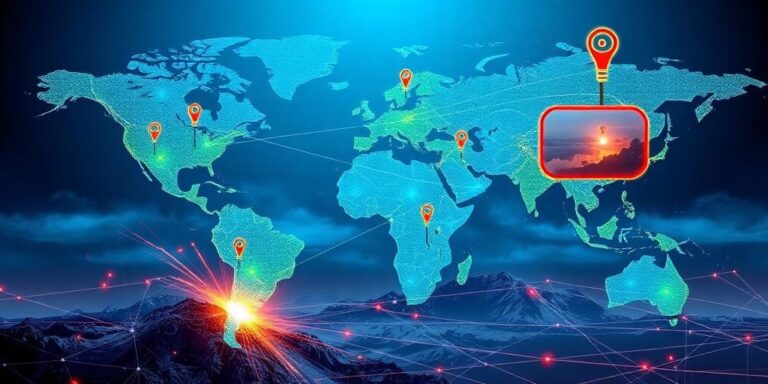IoT for Disaster Management and Early Warning Systems (2027)
As we approach 2027, the integration of Internet of Things (IoT) technologies into disaster management and early warning systems has become increasingly sophisticated. This article explores the current state of IoT in this critical field, highlighting advancements, applications, and future potential.
Advancements in IoT Technology
Over the past few years, IoT devices have seen significant improvements in several key areas:
- Sensor Technology: More accurate and durable sensors capable of withstanding harsh environmental conditions.
- Connectivity: Enhanced network infrastructure, including 5G and satellite communication, ensures reliable data transmission even in remote areas.
- Data Analytics: Advanced AI and machine learning algorithms provide real-time analysis of sensor data, enabling faster and more accurate predictions.
- Energy Efficiency: Low-power IoT devices with extended battery life or renewable energy sources reduce maintenance and ensure continuous operation.
Applications of IoT in Disaster Management
IoT technologies are being deployed across various stages of disaster management, from early detection to response and recovery:
Early Warning Systems
- Seismic Monitoring: Networks of seismic sensors provide early warnings for earthquakes, allowing timely alerts to be issued to vulnerable populations.
- Flood Detection: Water level sensors in rivers and coastal areas monitor rising water levels, triggering alerts for potential floods.
- Wildfire Detection: Drones equipped with thermal cameras and air quality sensors detect wildfires in their early stages, enabling rapid response.
- Weather Monitoring: IoT-enabled weather stations provide real-time data on temperature, humidity, wind speed, and precipitation, improving the accuracy of weather forecasts.
Emergency Response
- Smart Evacuation Systems: IoT-based systems guide people to safe zones during emergencies, optimizing evacuation routes based on real-time conditions.
- Search and Rescue: Drones and robots equipped with sensors and cameras assist in search and rescue operations, locating survivors in hazardous environments.
- Infrastructure Monitoring: Sensors monitor the structural integrity of bridges, buildings, and other critical infrastructure, identifying potential hazards and preventing collapses.
Post-Disaster Recovery
- Damage Assessment: Drones and satellite imagery provide detailed assessments of the extent of damage, helping to prioritize recovery efforts.
- Resource Management: IoT-enabled tracking systems monitor the distribution of relief supplies, ensuring that resources reach those who need them most.
- Health Monitoring: Wearable devices and remote health sensors monitor the health of affected populations, enabling timely medical interventions.
Challenges and Future Directions
Despite the significant advancements, several challenges remain in the widespread adoption of IoT for disaster management:
- Data Security and Privacy: Ensuring the security and privacy of data collected by IoT devices is crucial, especially in sensitive contexts.
- Interoperability: Lack of standardization can hinder the integration of different IoT systems, limiting their effectiveness.
- Cost: The initial investment and ongoing maintenance costs of IoT infrastructure can be a barrier for some communities.
Looking ahead, the future of IoT in disaster management holds immense potential. As technology continues to evolve, we can expect to see:
- More sophisticated AI-powered analytics: Enabling more accurate predictions and faster response times.
- Greater integration of IoT with other technologies: Such as blockchain and digital twins, enhancing transparency and resilience.
- Increased focus on community-based solutions: Empowering local communities to leverage IoT for their own disaster preparedness and response.
Conclusion
The integration of IoT technologies into disaster management and early warning systems has revolutionized our ability to prepare for, respond to, and recover from natural disasters. As we move towards 2027 and beyond, continued innovation and collaboration will be essential to fully realize the potential of IoT in creating safer and more resilient communities.




